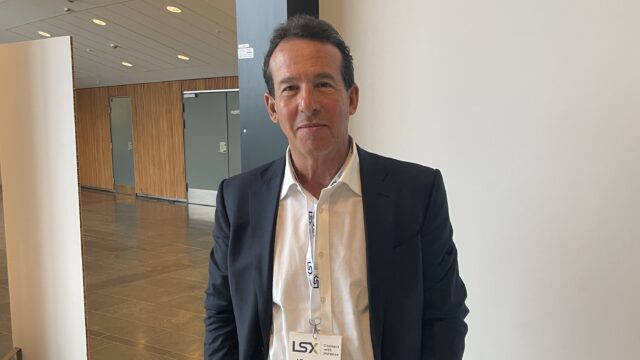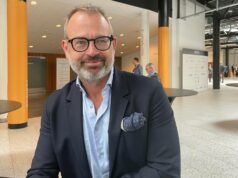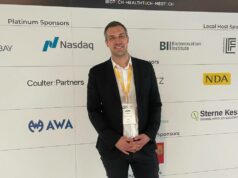
Jonathan Gertler: A clear pathway allows for investment
On the exhibition floor at the LSX Nordic Congress, we also ran into an old friend of BioStock’s, Back Bay’s CEO Jonathan Gertler. Gertler has long had a special interest in Nordic life science, expressed through his multiple engagements in the region during several years. At LSX, he participated in a panel discussion on the potential of the Nordic space. BioStock asked him to expand, and to compare the Nordic and US climate.
Back Bay Life Science Advisors is a boutique consultancy that pairs strategy with investment banking guidance and execution. During its 13 years in business, the firm has reached more than 750 projects and transactions. Partnering with DNB Bank in 2023, Back Bay attained access to DNB’s global capital markets and investment banking capabilities. With this addition, the company looks forward to continuing to work with all types of life science innovators.
For many years, Back Bay’s CEO Jonathan Gertler has taken an interest in the Nordic Life Science space, collaborating with Nordic companies and visiting the area frequently. At the ongoing LSX Nordic Congress, he talked about the current financing climate in the panel discussion “Unleashing The Global Potential Of The Nordic Life Science Markets Through Strategic Internationalization.” The discussion addressed, among other things, challenges and strengths in the Nordic life science market. Afterwards, BioStock asked Gertler to elaborate on the prevailing similarities and differences between his two home arenas and how he sees the development going forward.
Also read: LSX’s Managing Director: “A good pitch requires bravado”
Watch Jonathan Gertler’s keynote from BioStock Life Science Summit 2022 here.
Do you see any difference in the investor climate in the Nordic countries compared to the US?
– They tend to parallel each other. The investor climate in both the public and private markets has been exceedingly tough for the last couple of years, especially lately.
What is your take on the current investor climate in the US?
– On the private market in the US, there is a large amount of capital on the side line as there has been a resistance to invest in new companies. Although venture investing is starting to accelerate back up, it has been a hard environment for making an exit, raise funds, and for funds to invest in companies. Thus, private investors are holding on to their reserves for their existing companies.
– For the public markets, I am seeing glimmerings of hope. There have been a couple of large biotech IPOs in the US. The medtech and healthtech markets are still veering towards much more advanced companies, often with profitability but at least with existing revenues. The public markets have certainly receded, with the number of new issuances dropping.
And if we shift to the investment climate in the Nordics?
– The Nordics is really not that different from the US. Again, the biotech venture community is eager to deploy capital – but is doing so carefully. There is much less of an institutional medtech and healthtech community in the Nordics.
– Looking at the data from the public markets in the Nordics, I think there have been only two IPOs on the Nasdaq Stockholm Exchange in 2023, which parallels with the pessimism seen in the US market.
– If the US market opens up more, however, I expect we will see some more flexibility in the Nordic market as well.
How accessible do you deem private capital today?
– The principles in both geographies are pretty much the same in terms of private capital raises.
– If you are raising private capital solely in the Nordics, however, there may be less of a need for a clear definition of your regulatory path compared to what investors demand in the US or other larger markets. The same really goes for commercial strategy and exit aspects.
Could you expand on those demands and how they differ between the Nordics and the US?
– If you come to the private US markets, there is no question that you need to have such infrastructure to attract US venture capital. At the very least, you need to have clearly defined plans for how the proceeds will be used in terms of US development. This includes regulatory pathways and the commercial perspective, as well as the exitability of the company. For the US public markets, the same principles apply.
– I think it is more flexible in the Nordic public markets because some of the markets are skewed toward lower valuation, lower raises and greater access to retail investors who stick to the story longer.
– Yet, on my panel this morning, both Henriette Richter of Sofinnova and Nanna Lüneborg of Forbian called for companies to have a more global plans to become attractive.
Lastly, what is the general sentiment that you take away from this congress?
– I think people are fearfully hoping. I think that we all still need to hunker down and make our strategical plans on how to get capital, how to properly deploy the capital that we already have in place and make sure the strategic prioritisation is intact in the company. These are critical factors even in the best of times, and something we at Back Bay often point companies´ attention towards, large and small.
– With that said, I think we are all hopeful for this particular space. At the end of the day, healthcare in all of its forms – healthtech, medtech, biotech – are an essential part of helping the human condition. Therefore, companies will find their way forward. Still, we have to be more careful. Although this especially applies during critical times, I think it is a moral we should bring with us into good times as well.


